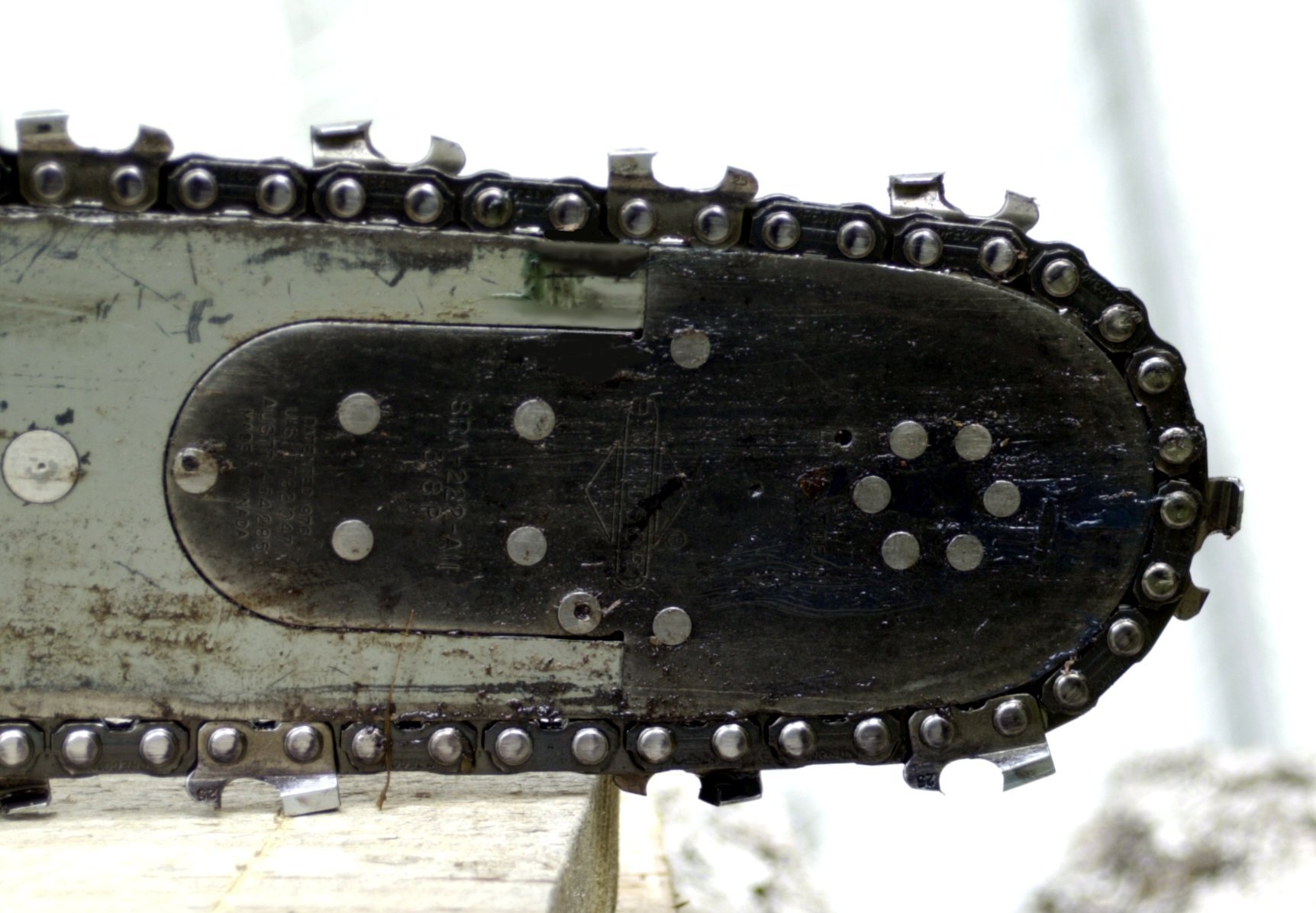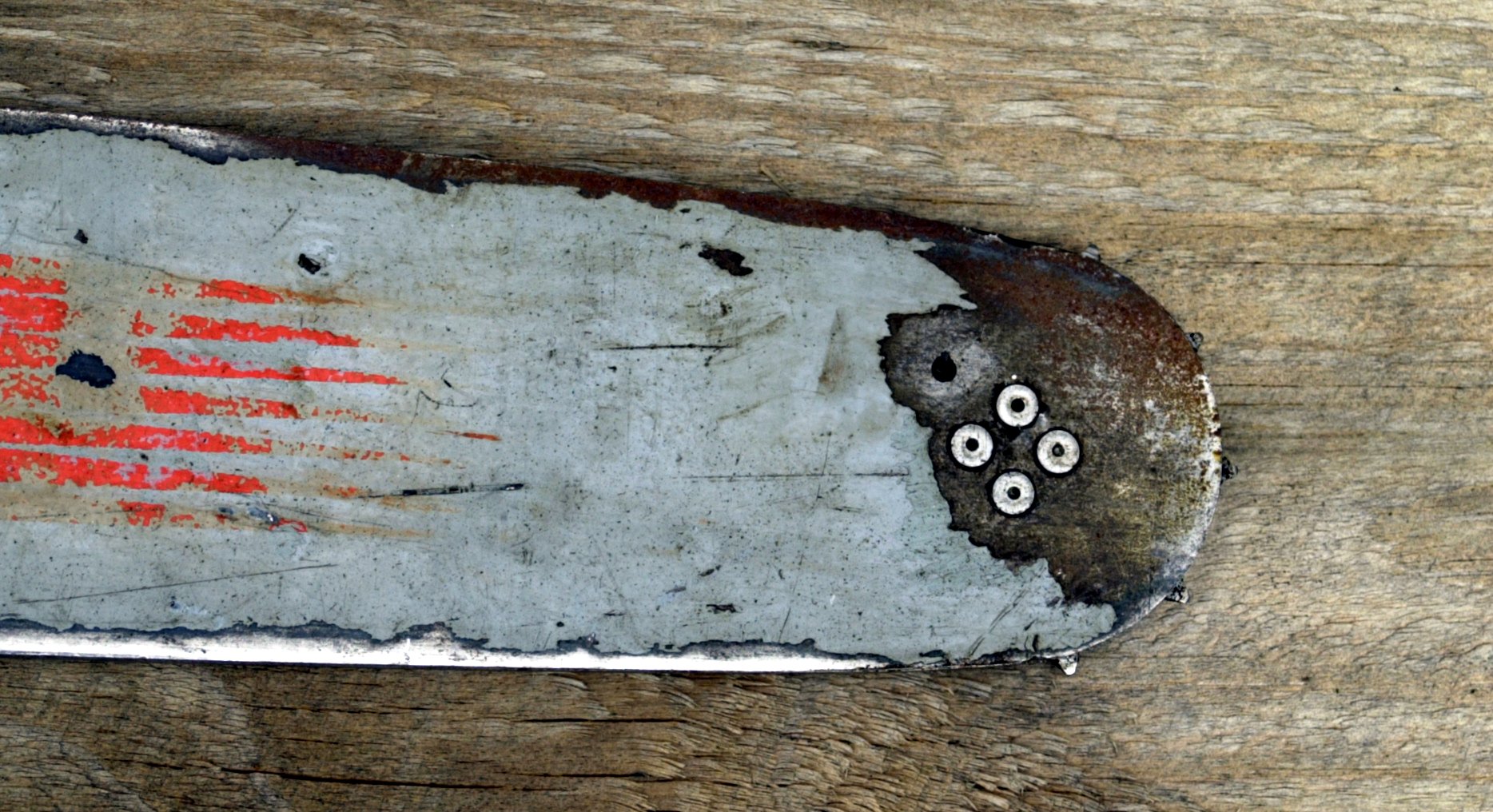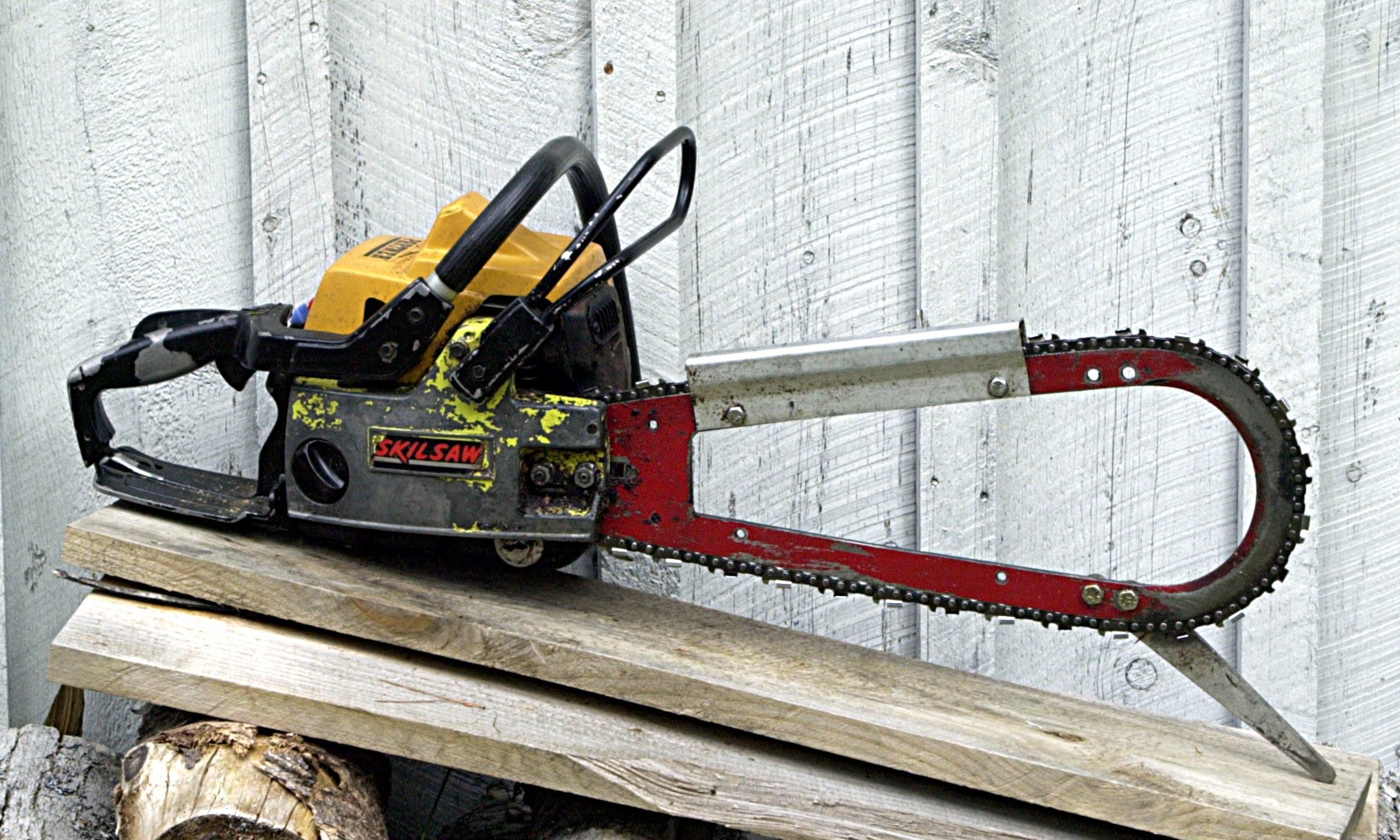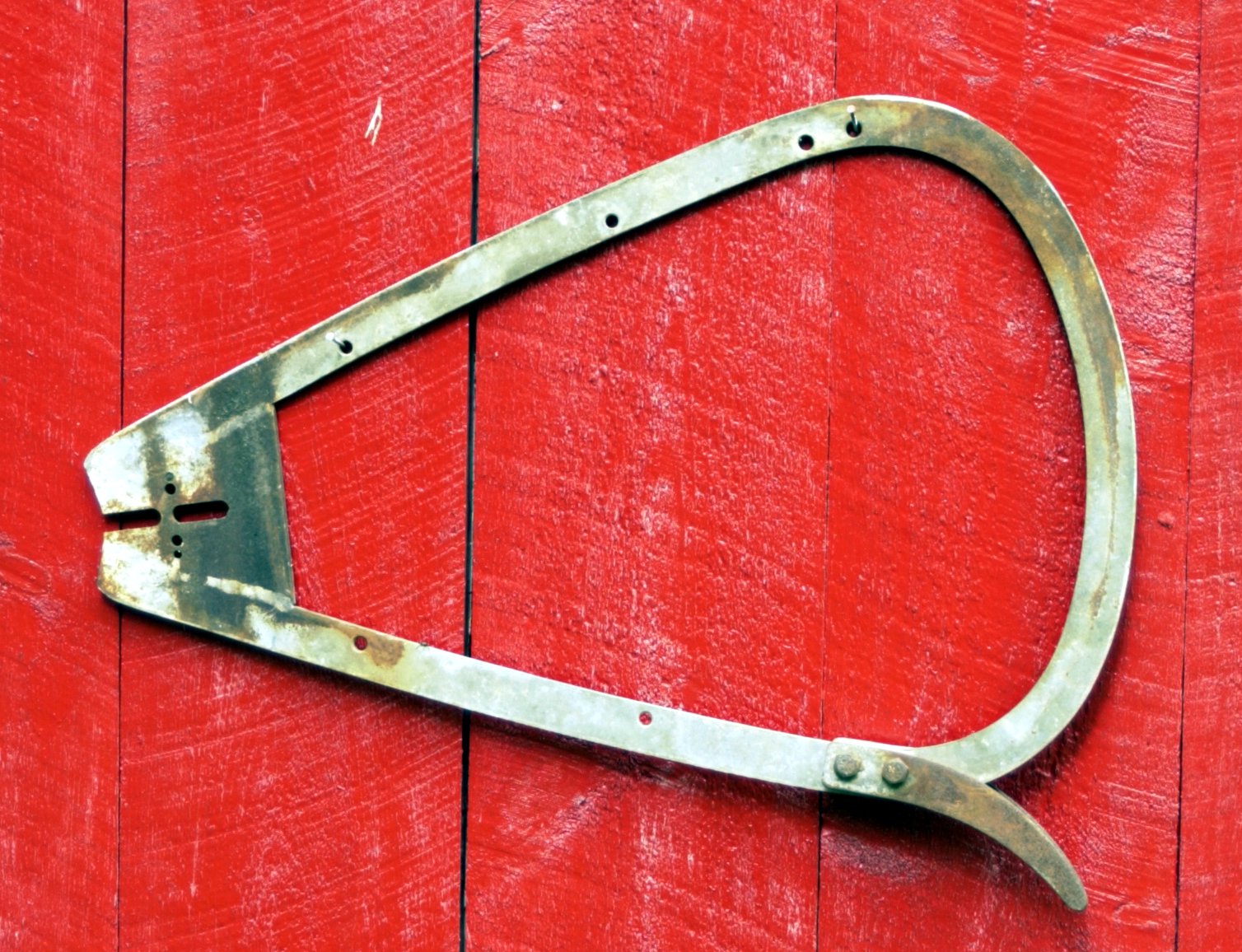![[hard nose bar]](hardtip.jpg)
![[roller tip bar]](rollertip.jpg)


Note that the radius of the tip is much smaller than on the bar above. As a result, the tendency of the saw to kick is much reduced.


But even if this one had the upper hand guard that it is missing, it's still too unsafe for me!
These pages are Copyright 2006 © R. P. Sarna. All Rights Reserved. You are given permission to copy and use the information for free and to freely give it away to anyone else --- but you cannot charge for it. This notice must stay on all copies.
The guide bar does just that -- guides the saw chain. Usually, it requires little maintenance. Shortly, we'll look at that, But first, let's look at what types there are.
![[hard nose bar]](hardtip.jpg)
|
Hard-tip bar This bar is made of tempered steel, but the nose has a layer of a very, very hard material (like Stellite) fused on it near the tip. Hard nose bars cause more friction on the chain, lose more power, the chain runs hotter, the chain cannot be run as snugly on the bar -- but there are no roller bearings to be bothered by grit and dirt. If you must cut in very dirty conditions, this is what you want. Otherwise, you want a sprocketnose bar. |
![[roller tip bar]](rollertip.jpg)
|
Roller tip bar An early attempt to lessen the friction around the end of the bar, it worked pretty well. But the chain is not supported well near the roller, and the roller itself is supported only by a thin sheet of steel (about the thickness of the bar groove.) The chain is supported when it's on the roller by the chain's tiestraps resting on the roller. |

|
Sprocket-nose bar The chain near the nose is supported by the side plates, which also contain a sprocket on a roller bearing. The chain is supported as it passes the nose of the bar by its drive links being held in the "pockets" of the sprocket. The bar shown has the whole nose section as a separate piece that can by changed in case of damage. |

|
Reduced-kick sprocket-nose bar This is a small bar, probably
from a "homeowner's" saw. You can just see the tips of the
sprocket teeth peeking out from the bar nose. The sprocket itself,
with the roller bearing, could be replaced if the bar itself is not
damaged.
Note that the radius of the tip is much smaller than on the bar above. As a result, the tendency of the saw to kick is much reduced. |

|
Paddle bar Made to cut with the tip, you don't have to bend over so much. But if the smaller nose on the previous bar is less likely to kick, it's obvious that this bar, having a greater radius, will kick a whole lot more. Don't try to use one of these without the spur in the lower corner to catch the bar's tendency to kick. Better yet -- why not just use a clearing saw saw instead? For most of the things the paddle bow is good for, the clearing saw is better and safer. |

|
Bow bar Here's the ultimate in a saw bar that will kick. These
can be vicious! The idea was to create a bar that would be difficult
to get pinched. If you're bucking, say, in soft ground, it will
work. You try to control the direction of the (hopefully small) trees
you are felling by pushing on them with one hand while you control the
saw with the other. It used to be very popular down South.
But even if this one had the upper hand guard that it is missing, it's still too unsafe for me! |